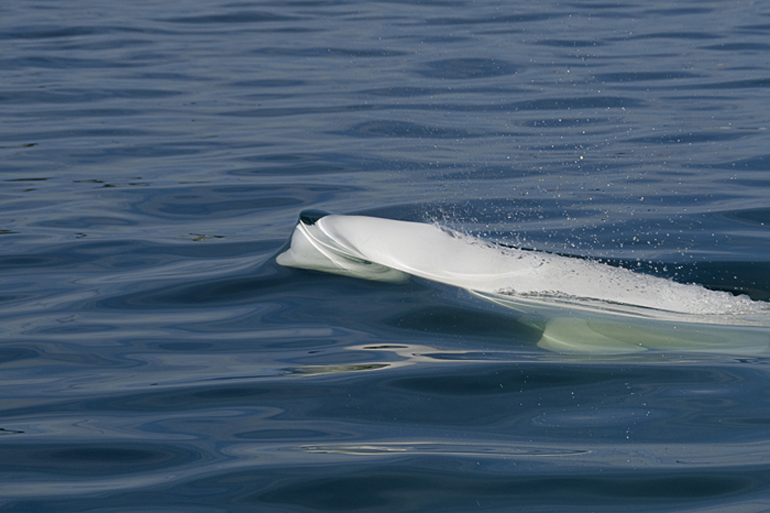
Belugas whales are at home amid the jumbled blocks of sea ice in Arctic waters. Like seals and bowhead whales they can meander under the pack ice and manage, most of the time, to find air in a maze of natural fissures. When the need arises, though, they can create their own breathing holes. Belugas have no dorsal fin, which would be an encumbrance under the frozen sea, but do possess a fibrous dorsal ridge which can be used to "pound" a hole in the ice above.
Perhaps 100,000 beluga whales range around the top of the globe. Those in North America are best known. As the sea congeals in winter the whales swim south, in advance of the ice, to the Bering Sea in the west and well down the coast of Greenland in the east. Then, in spring, as the ice breaks up, the great procession is reversed. They head north to congregate in river estuaries, where they calve, mate, molt, and feed on fish and squid. If they can steer clear of polar bears, killer whales, and human hunters a beluga whale will live about 30 years during which a female might rear five young.
A century ago the prognosis for beluga whale survival was guarded. Scottish whalers discovered a proficient way of killing the little whales. They "herded" them into shallow inlets at high tide, then blocked escape with their flotillas. The whales never stood a chance as hundreds were stripped of hide and blubber, to be sold as leather, oil, and soap. One infamous hunt, in 1894, recorded the slaughter of 820 belugas.
Fortunately, commercial whaling has been under a moratorium, established by the International Whaling Commission, since 1983. This has allowed a marginal recovery of several species, including the beluga, that were threatened or endangered. Sadly Japan, Norway, and Iceland continue to hunt in violation of the I.W.C., with no purpose other than to satisfy their elitist taste for "exotic" meat.